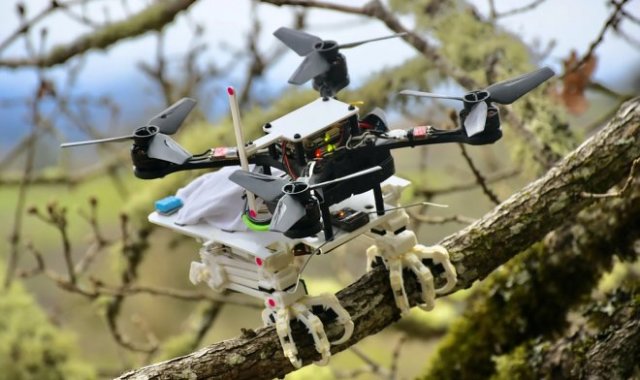
Drone with claws
Nature continues to share with us its "know-how" with great generosity, the stock of which is unlikely to ever run out, and does it completely free of charge. This time, engineers from Stanford "borrowed" from her, or rather from the falcon, its unique claws, with which it confidently sits on a variety of surfaces and deftly grabs prey.
Scientists have developed a quadrocopter robot, which was equipped with "bird claws". The system was named Stereotyped Nature-inspired Aerial Grasper (SNAG), the prototype of which was the peregrine falcon claws. The SNAG is equipped with motors that perform the functions of muscles and wires that act as tendons. When landing, the legs extinguish the "impact" of the drone, forcing the claws to cover and fix on the landing object for 20 milliseconds. After fixing the ankle, the accelerometer registers the robot's stop. Next, a special algorithm stabilizes the robot "sitting on a branch" so that it does not "somersault". According to the developers, the SNAG system will give drones the opportunity to land on objects like branches and wires, as well as "rest" between flights, which will expand their capabilities. In particular, they could be engaged in cargo delivery, picking up and dropping them right on the fly.
